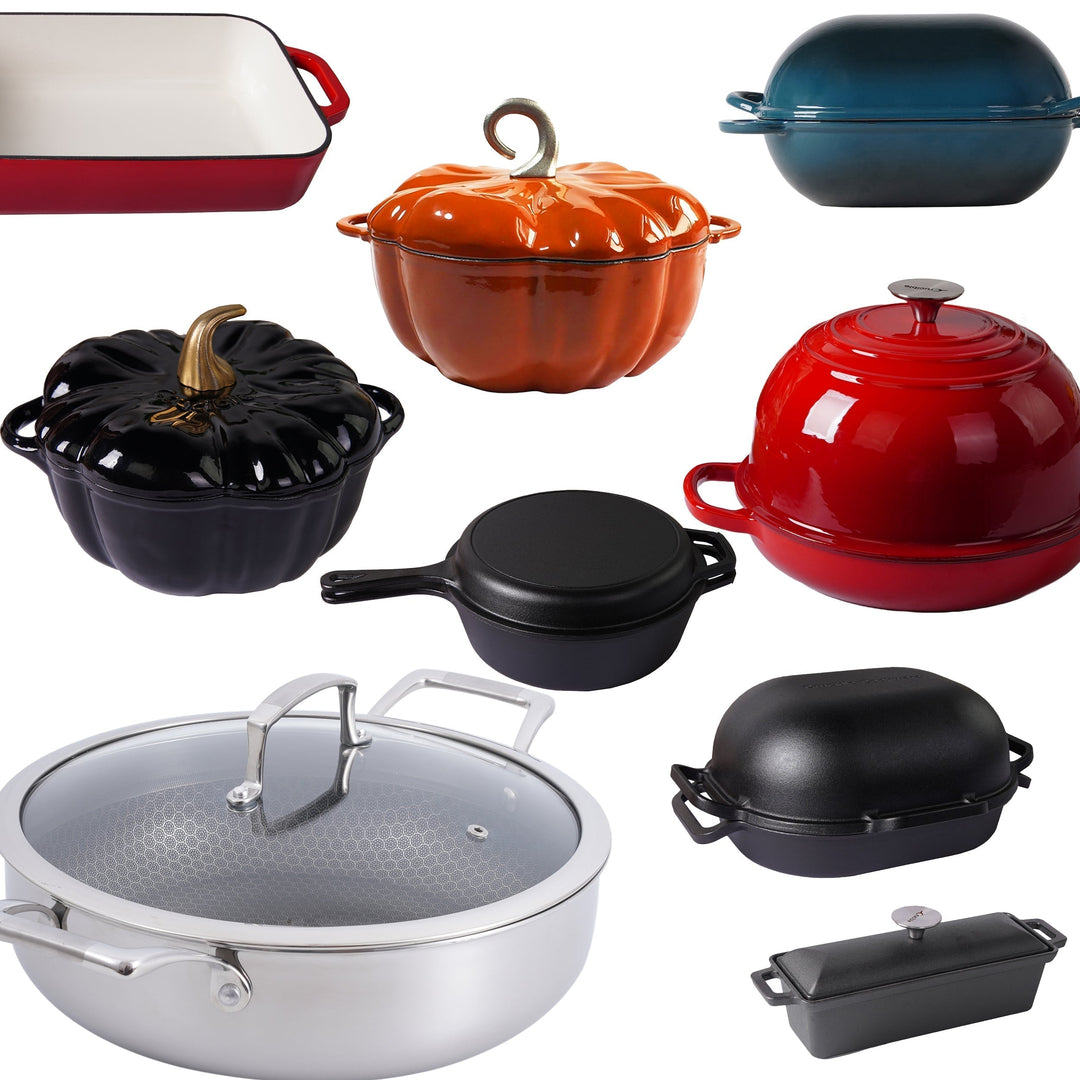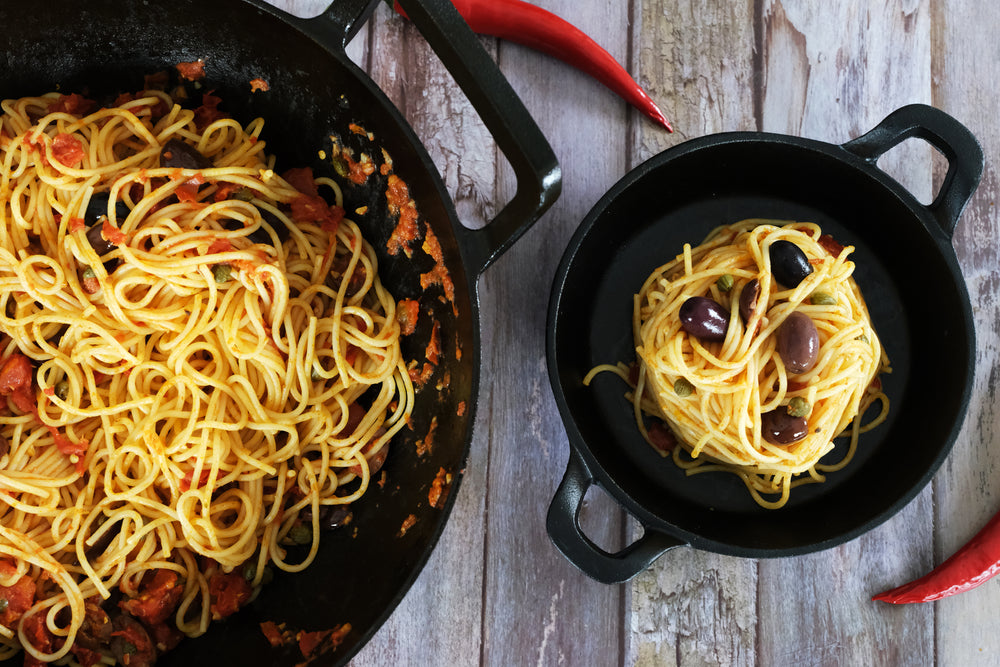A Arte da Apresentação: Como Elevar a Sua Experiência de Cozinha em Casa

Quando se trata de cozinhar, muitas vezes focamo-nos nos ingredientes, técnicas e sabores que se juntam para criar uma refeição deliciosa. Mas e se lhe disséssemos que a apresentação—ou disposição no prato—é tão importante quanto a própria comida? A forma como um prato é apresentado pode elevar uma refeição caseira simples a uma experiência gourmet, tornando-a mais especial e até realçando os sabores que trabalhou tanto para criar.
A apresentação é uma forma de arte que não só mostra as suas habilidades culinárias, mas também envolve todos os sentidos, desde a visão ao paladar. Neste artigo, vamos explorar como a apresentação pode mudar a forma como desfruta da comida e partilhar dicas práticas sobre como pode elevar as suas refeições em casa, quer esteja a preparar um jantar durante a semana ou um banquete de celebração.

Por Que a Apresentação Importa
O primeiro passo para apreciar a apresentação é entender a sua importância. A apresentação é uma parte essencial da experiência gastronómica, pois atua na psicologia da comida. O nosso cérebro muitas vezes julga a comida pela aparência antes mesmo de dar uma dentada. Um prato bem apresentado cria expectativas, estimula o apetite e pode fazer a refeição parecer mais luxuosa ou cuidadosamente preparada.
Pense na apresentação como contar uma história com a sua comida. Um prato bonito convida à curiosidade, dá à sua refeição um sentido de importância e aumenta a antecipação pelos sabores que virão.

O Básico da Apresentação
Embora chefs profissionais possam levar a apresentação a um nível artístico, não precisa de formação avançada para fazer os seus pratos parecerem deslumbrantes. Aqui estão algumas dicas simples que terão um grande impacto na sua apresentação:
1. Escolha o Prato Certo
O tipo de prato que escolher é crucial. Pratos brancos são frequentemente usados na alta cozinha porque fazem as cores da comida sobressaírem e permitem que os ingredientes se destaquem. No entanto, não tenha medo de experimentar pratos que complementem o tipo de comida que está a servir. Por exemplo, pratos rústicos como guisados ou caçarolas podem ficar ótimos em pratos profundos de tons terrosos, enquanto saladas frescas podem destacar-se num prato vibrante e colorido.
Ao escolher um prato, pense também no tamanho. Um prato demasiado pequeno vai apertar a sua comida, enquanto um prato demasiado grande pode fazer a sua refeição parecer escassa. Opte por um prato que dê espaço à sua comida, mas que não a sobrecarregue.

2. Crie Camadas e Altura
Para tornar o seu prato mais dinâmico, tente criar altura e camadas. Em vez de colocar tudo plano no prato, empilhe ou encoste os ingredientes uns aos outros. Por exemplo, uma porção de puré de batata pode ser colocada ligeiramente fora do centro e coberta com um pedaço de carne, ou os legumes podem ser dispostos verticalmente para maior altura.

3. A Importância do Espaço Negativo
O espaço negativo refere-se ao espaço vazio à volta da sua comida no prato. Embora possa pensar que é importante preencher cada centímetro do prato, deixar algum espaço vazio pode, na verdade, fazer a sua refeição parecer mais refinada e equilibrada. O espaço negativo permite que a comida "respire" e evita que o prato pareça sobrecarregado ou desordenado.
Técnicas para Apresentar Como um Profissional
Agora que compreende o básico, vamos explorar algumas técnicas fáceis de apresentação que podem ajudá-lo a criar pratos com aspeto profissional sem necessidade de equipamento sofisticado ou competências especializadas.
1. A Arte do Molho
Um molho bem colocado pode transformar a aparência de um prato. Em vez de simplesmente verter o molho sobre a comida, considere usar uma colher, pincel ou frasco de pressão para colocar artisticamente o molho em forma de traço ou pequeno círculo no prato. Esta técnica permite controlar onde o molho cai, criando um toque artístico. Também pode regar ou colocar pontos de molho ao redor do prato para adicionar interesse.
2. Guarnição
As guarnições não só tornam a comida mais bonita—também realçam o sabor e o aroma do seu prato. Ervas frescas como manjericão, coentros ou salsa podem trazer cor e frescura ao prato, enquanto flores comestíveis, raspas de citrinos ou uma pitada de especiarias podem proporcionar um toque final único. Mas lembre-se, menos é mais. Algumas guarnições cuidadosamente escolhidas são tudo o que precisa para elevar uma refeição.

3. Contraste de Cor e Disposição
Um dos aspetos mais importantes da apresentação é criar contraste. Um prato com diferentes cores, texturas e formas parece mais apelativo ao olhar. Ao dispor a sua comida, tente criar um equilíbrio de cores—pense em legumes verdes combinados com um molho vermelho vibrante ou um frango assado dourado contra um fundo de folhas verdes.
O contraste de texturas também é fundamental: combinar algo crocante, como uma cobertura estaladiça, com algo suave, como um puré cremoso, criará interesse visual e sensorial.

4. Uso das Formas
Considere brincar com as formas no seu prato. Componentes redondos como carnes, legumes ou molhos podem ser compensados com formas geométricas, como linhas longas de puré ou fatias de legumes, para um interesse visual. Formas triangulares, quadradas ou mesmo circulares têm todas um propósito para tornar o seu prato mais dinâmico.

Inspiração Cultural: Apresentação pelo Mundo
Cada cozinha tem o seu próprio estilo de apresentação, influenciado pelas suas práticas culturais, ingredientes e tradições de apresentação. Aqui está uma visão de como diferentes cozinhas inspiram a apresentação:
Cozinha Francesa: Precisão e Elegância
Na cozinha francesa, a apresentação é uma arte, com cada componente cuidadosamente colocado no prato. Uma apresentação elegante e minimalista é fundamental, muitas vezes com foco na simetria e precisão. Os pratos são organizados de forma a permitir que cada ingrediente brilhe, usando guarnições finas e colocação cuidadosa dos molhos.
Cozinha Italiana: Rústica e Abundante
A apresentação italiana tende a ser simples e rústica, refletindo o foco da cultura em ingredientes frescos e de alta qualidade. Um prato robusto de massa pode ser servido numa tigela grande com apenas algumas guarnições simples, permitindo que a comida fale por si.

Cozinha Asiática: Equilíbrio e Harmonia
Na cozinha asiática, a apresentação reflete frequentemente os princípios de equilíbrio e harmonia. Pequenas porções, guarnições delicadas e a disposição cuidadosa dos ingredientes criam um prato esteticamente agradável e equilibrado. O sushi, por exemplo, é muitas vezes apresentado de forma organizada mas minimalista, destacando a beleza de cada peça individual.
Apresentação para Refeições do Dia a Dia
Embora a apresentação esteja frequentemente associada à alta gastronomia, não precisa de ser reservada para ocasiões especiais. Pode aplicar técnicas simples de apresentação a refeições do dia a dia para tornar até um jantar casual mais entusiasmante.
Aqui ficam algumas dicas rápidas para elevar a sua apresentação diária:
-
Sirva em porções individuais: Em vez de servir tudo à maneira familiar, considere apresentar cada prato individualmente para tornar a refeição mais pessoal.
-
Concentre-se em guarnições frescas: Mesmo algo tão simples como um ramo de alecrim ou um pouco de queijo ralado pode adicionar um toque especial.
-
Mantenha tudo limpo: Use um pano limpo para limpar as bordas do seu prato antes de servir. Uma apresentação limpa e arrumada torna a refeição mais refinada.


Considerações Finais
A apresentação é uma arte e, como qualquer forma de arte, requer prática. Mas com algumas técnicas simples, pode elevar a sua cozinha caseira e tornar cada refeição numa experiência mais agradável e memorável. Quer esteja a organizar um jantar, a cozinhar para a família ou simplesmente a mimar-se com uma refeição bem merecida, a apresentação ajuda a criar um sentido de ocasião e apreço pela comida que preparou.
Da próxima vez que estiver a cozinhar, reserve um momento para pensar em como o seu prato vai parecer quando chegar à mesa. Um pequeno esforço na apresentação pode fazer toda a diferença na forma como você — e os seus convidados — experienciam a comida.















Deixe um comentário